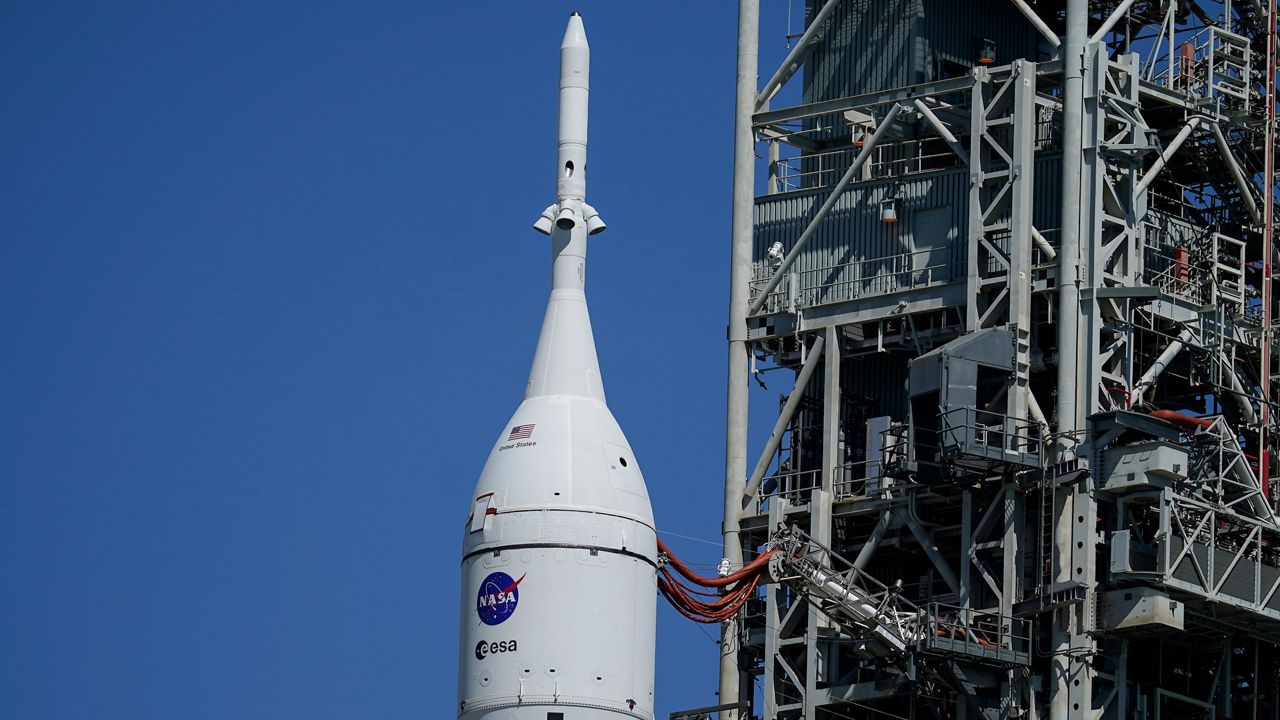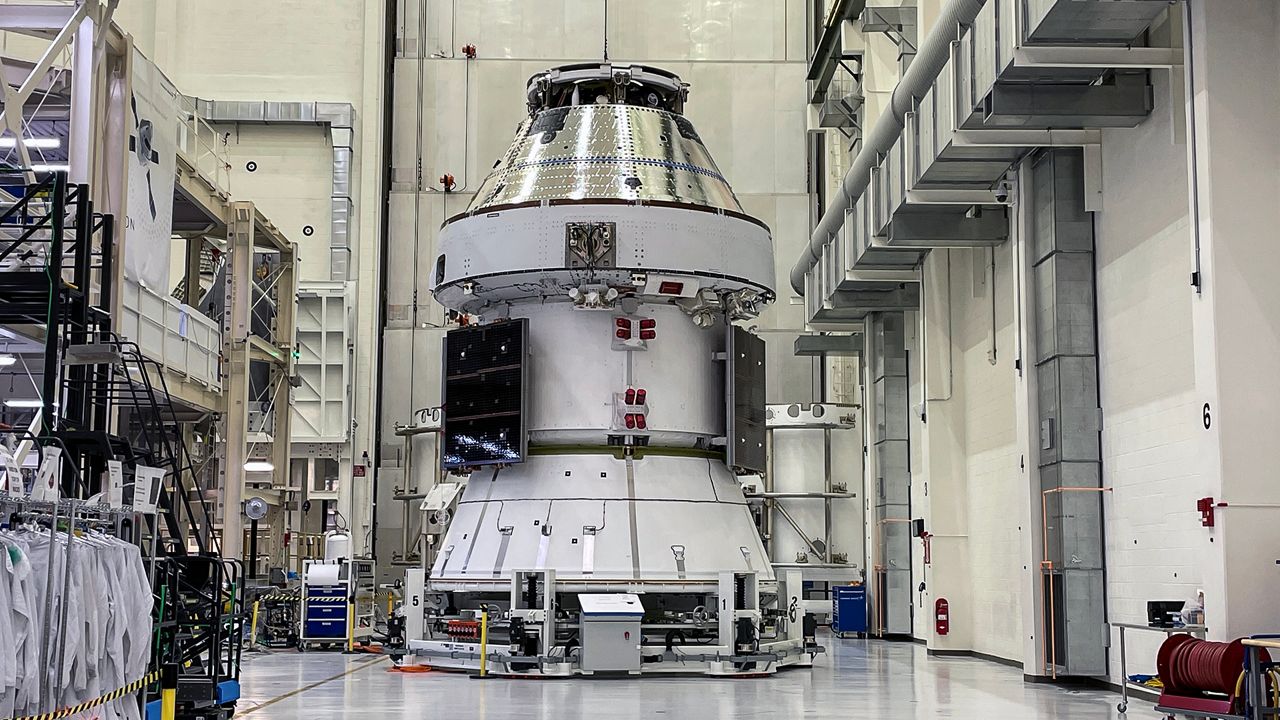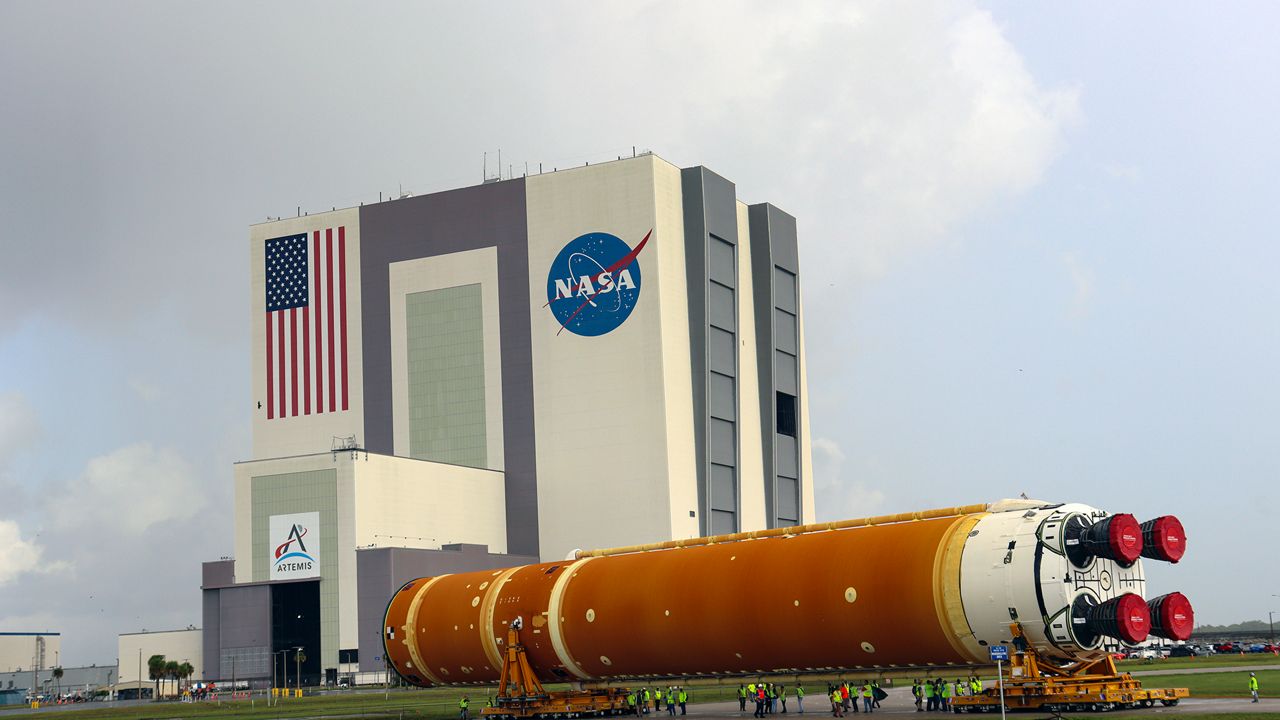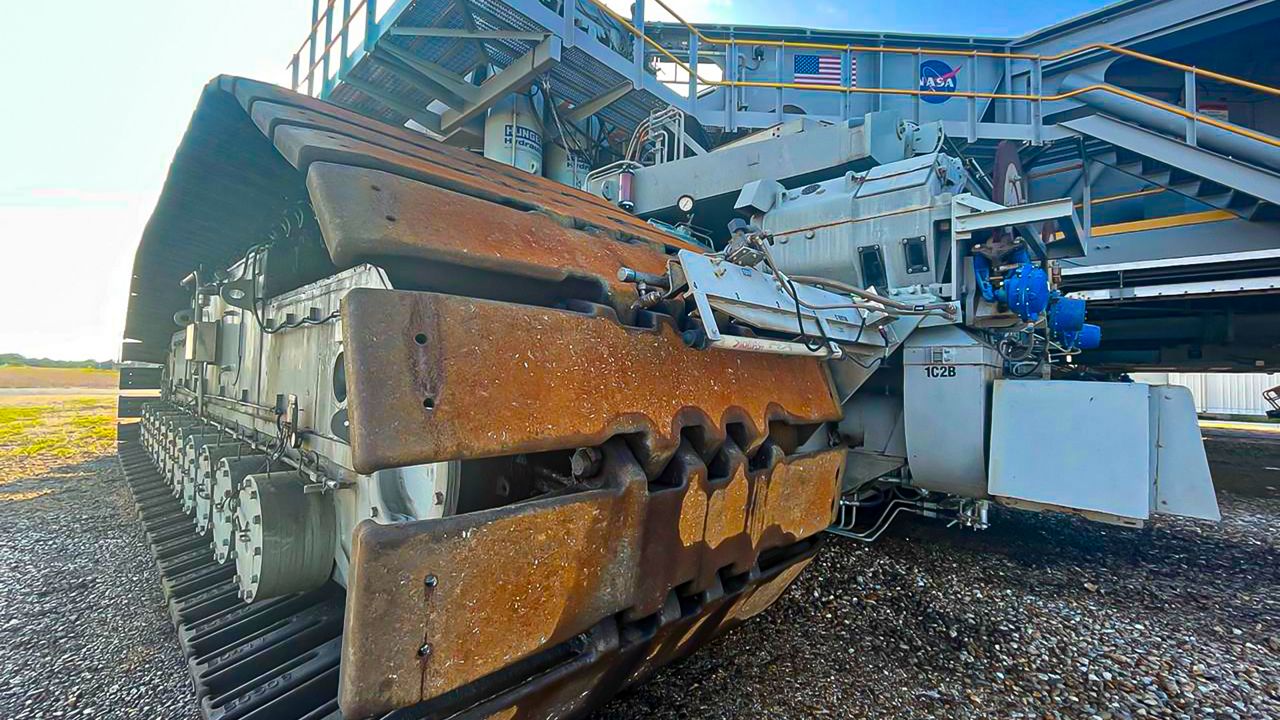KENNEDY SPACE CENTER — During a Monday teleconference, NASA gave an update on where the Artemis I mission currently stands and spoke about the test that will be conducted to determine if the repairs of the seals on the liquid hydrogen lines worked.
What You Need To Know
- NASA officials discuss the repair work done on two seals after hydrogen leak was discovered during second Artemis launch attempt
- NASA is scheduling a cryogenic demonstration test on Wednesday to see if repair work is good
- The launch dates are still tentative
- RELATED coverage:
NASA has tried twice to launch the uncrewed Artemis I moon mission, but both times were met with two different liquid hydrogen leaks and temperature issues for the Space Launch System’s rocket engines for the first attempt in August.
During the second launch attempt in early September, NASA engineers encountered a liquid hydrogen leak near the bottom of the Space Launch System rocket. The area has an 8-inch quick disconnect line that is an umbilical that is used to feed the liquid hydrogen from storage tanks into the rocket’s core stage.
Since the encounter, NASA officials said that engineers replaced two seals: “one surrounding the 8-inch line used to fill and drain liquid hydrogen from the core stage, and another surrounding the 4-inch bleed line used to redirect some of the propellant during tanking operations.”
Understanding the cryogenic demo test
NASA is scheduling a cryogenic demonstration test for Wednesday, Sept. 21, to determine if the seal repairs work, which was the main highlight of the Monday, Sept. 19, teleconference.
During the call, NASA officials explained that during the test, supercold liquid oxygen and liquid hydrogen will be loaded into both the core stage and the rocket’s interim cryogenic propulsion stage.
This will also allow engineers to evaluate the updated fuel loading procedures that are designed to reduce the thermal- and pressure-related stress on the system and a kick-start bleed test will be conducted as well.
“You know, we've been through a number of operations with this vehicle, we're learning more about this vehicle, it's a new machine for us," said Tom Whitmeyer, deputy associate administrator for Common Exploration Systems Development. "One of the things I think that we really have a better appreciation for now, which is what we will be demonstrating here on Wednesday, is what we call kinder and gentler loading operations.”
Deputy Manager of Exploration Ground Systems Program Jeremy Parsons said that there are no technical concerns going into the demo test on Wednesday. Despite the 15% chance of lightning within 5 nautical miles that officials are keeping an eye open for, they feel good about the test, he said. It is expected to start around 4:40 a.m. EDT and end at 3 p.m. EDT.
He also said neither Orion nor the boosters will be powered during the demo test Wednesday.
John Blevins, the chief engineer of the Space Launch System Program, said engineers have looked over the data during the fueling attempt for the second launch, and that helped shape how the test will be directed.
Still, he said he is feeling confident of the demo test, saying, “The vehicle is looking good right now, with no constraints for the cryogenic test.”
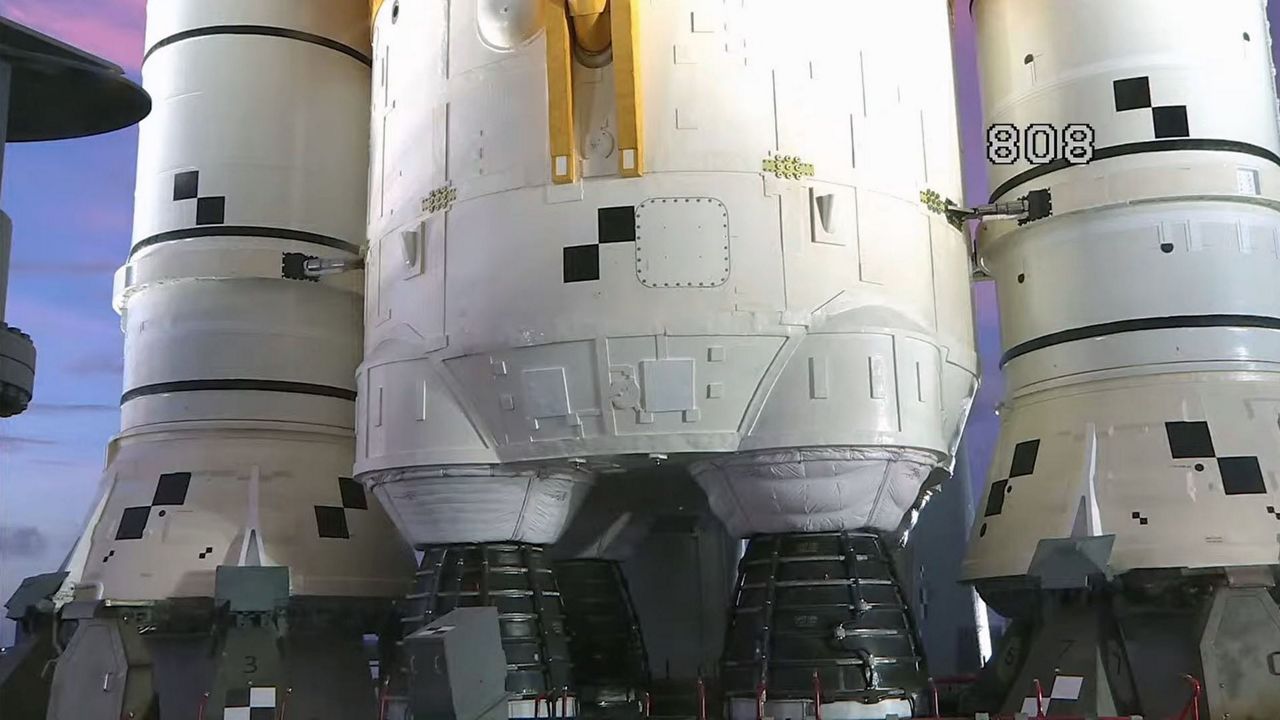
What caused the leak?
Mike Sarafin, Artemis mission manager, explained that an unknown object caused an indentation of the 8-inch quick disconnect seal, but engineers could not find the object.
“That showed us that there was a problem at that, at that 8-inch quick disconnect seal that contributed to the hydrogen leak,” he explained.
And you might need a magnifying glass to see the indentation.
“As far as the size of the indentation, it was just under 0.01 inch. Now that doesn’t sound like a lot, but again, we’re dealing with hydrogen, the smallest particle on the atomic chart,” Sarafin said.
He also said that on Sunday, Sept. 25, the team will have a mission management meeting to discuss the data they have collected from the launch attempts and the demo test.
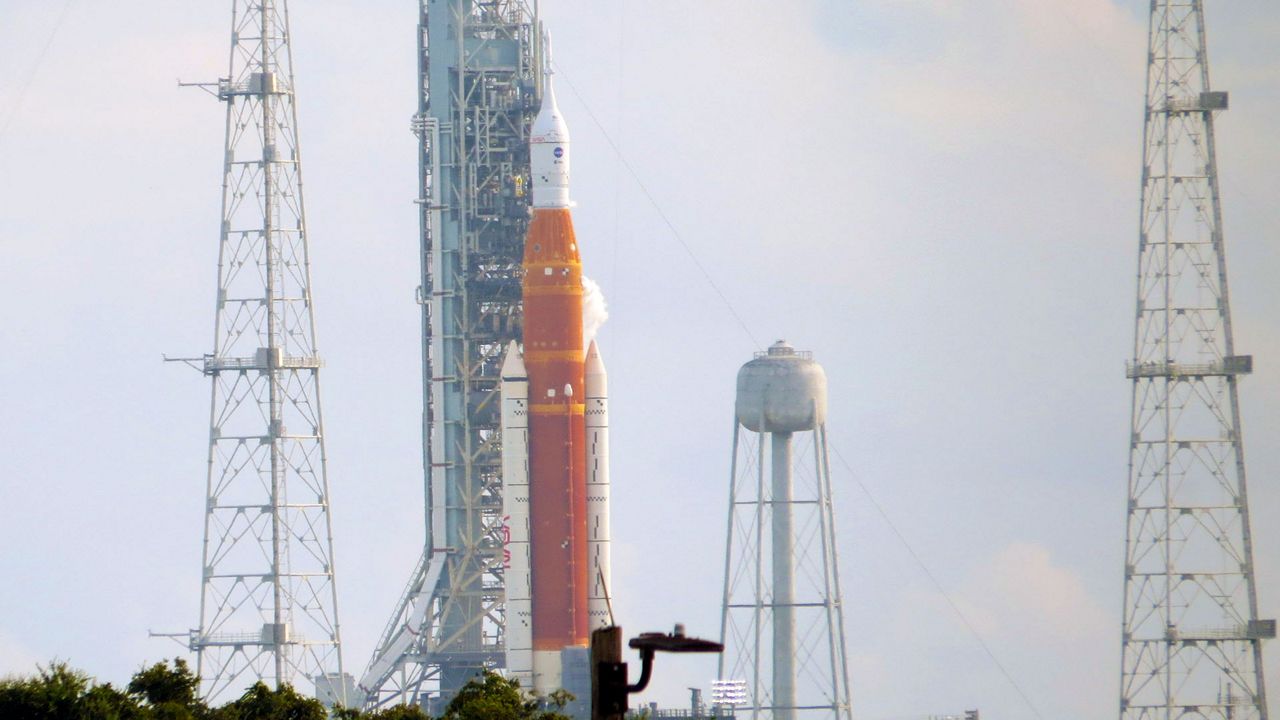
Ready for launch?
Currently, there are two tentative launch dates for the third Artemis I launch attempt:
- Tuesday, Sept. 27
- Sunday, Oct. 2
But those dates are under review by the Eastern Range, which gives launch approvals, officials explained Monday.
“… We are respecting the Range’s process and working closely with the Space Force on the flight termination system," Sarafin said. "All of the dates we talked about are for planning purposes. All of those dates I provided are all pending and pending the decision from the Range …”
At the moment, both the rocket and the Orion spacecraft are sitting at Launch Pad 39B at the Kennedy Space Center.
NASA submitted a waiver package to the Eastern Range for approval, asking for the waiver to not roll the rocket and the capsule back into the Vehicle Assembly Building to recharge the batteries of the flight termination system that are located on the core stage of the rocket.




